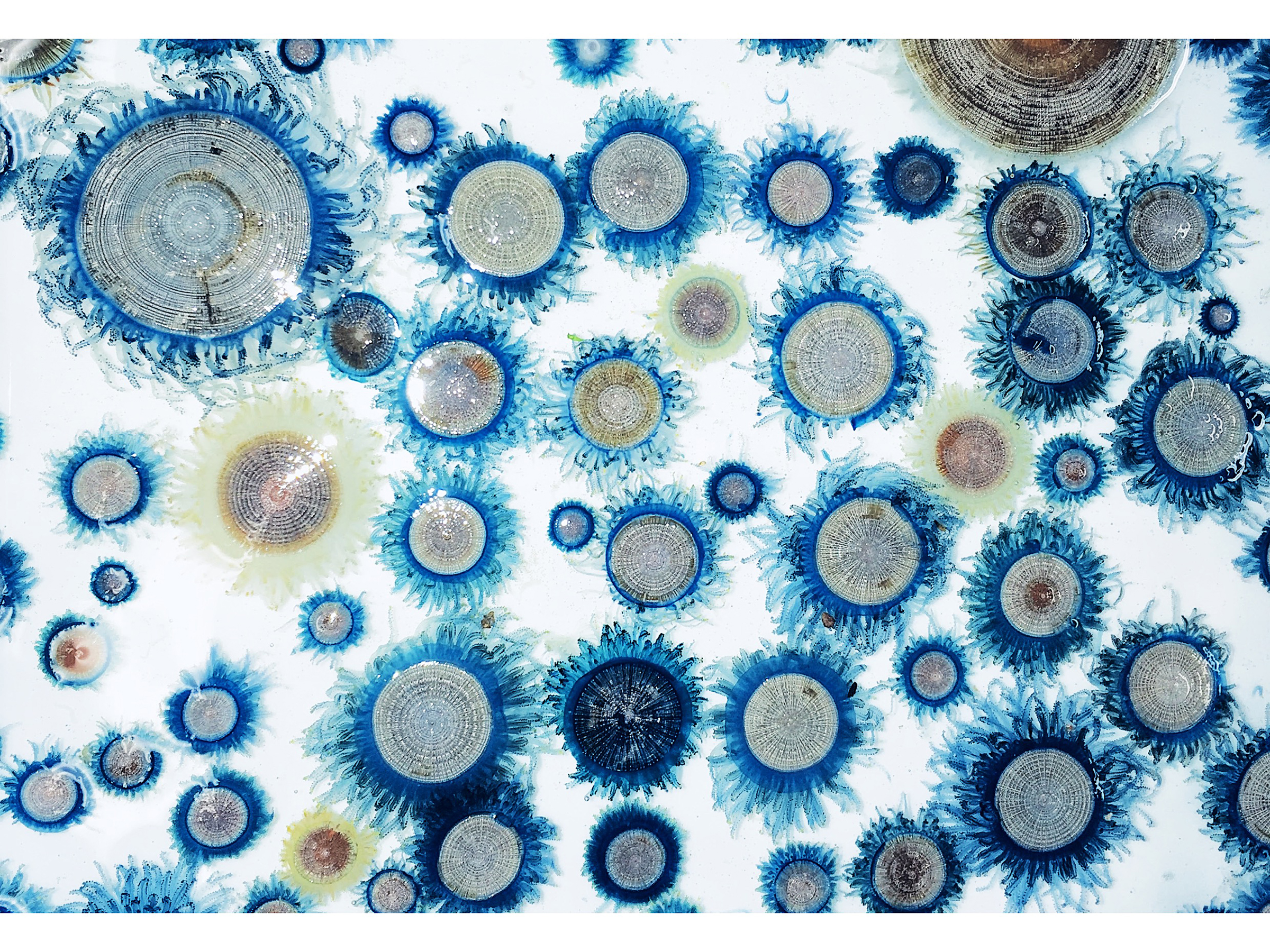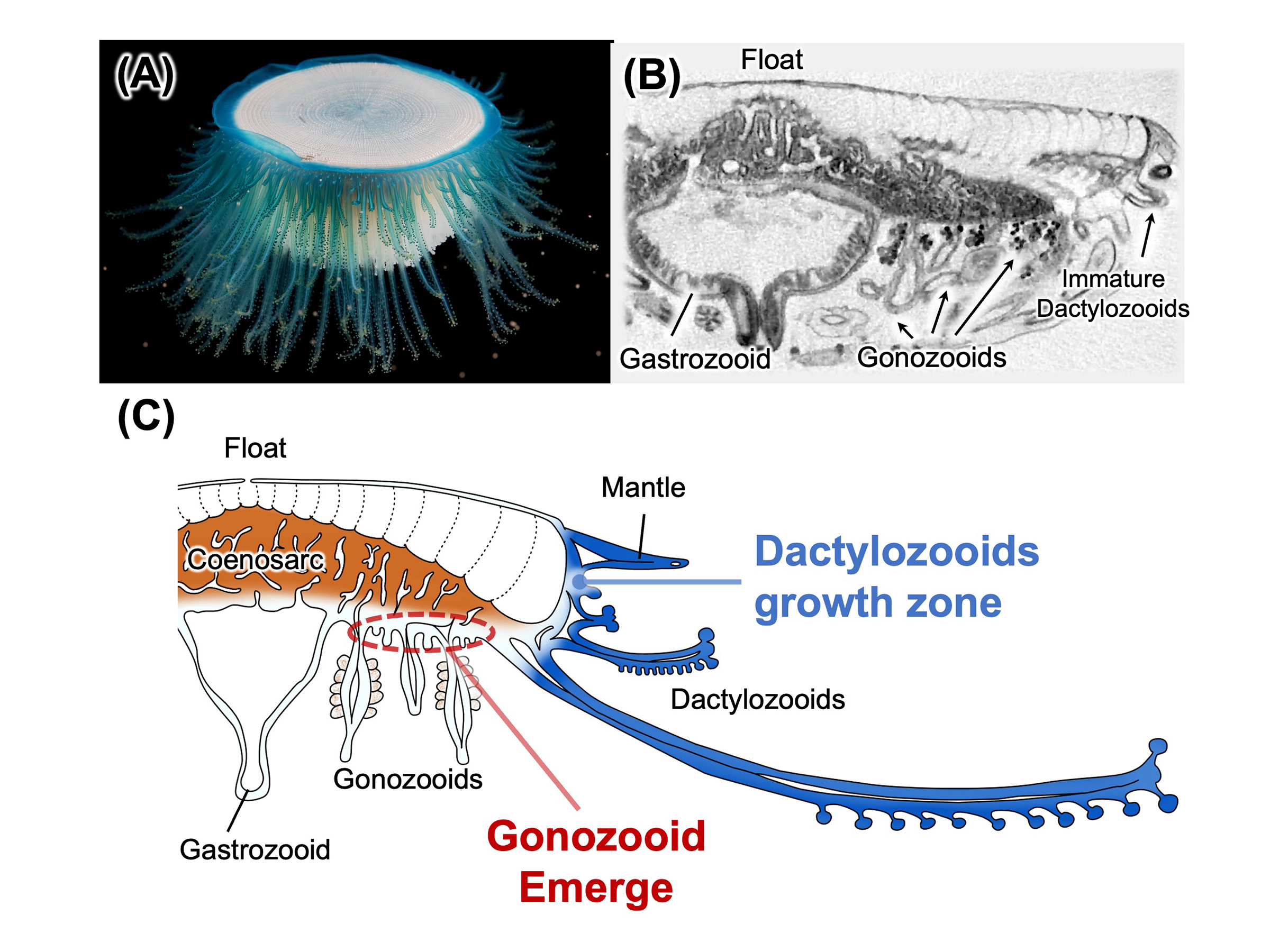How does the colony of Porpita porpita behave like a single organism?
Technical Section / Phenotype Research Center / Cell Architecture Laboratory

Zooid arrangement and colony growth in Porpita porpita
Kohei Oguchi, Akiteru Maeno, Keita Yoshida, Gaku Yamamoto, Hisanori Kohtsuka and Casey W. Dunn
Frontiers in Zoology (2025) 22, 11 1-12 DOI:10.1186/s12983-025-00565-3
The blue button Porpita porpita shows a highly integrated colony composed of functionally specialized zooids. Surface-floating organisms like P. porpita are called pleuston and form unique ecosystems in the ocean’s surface layers. However, due to their sensitivity to wind and currents, predicting their appearance is difficult, and their life history remains poorly understood. P. porpita is especially fragile and hard to maintain in captivity, making its colony development largely unknown. In this study, we analyzed specimens of various sizes collected from Sagami Bay, Japan, using histological sections and micro-CT. We found that each colony always had one central gastrozooid, and the number and size of gonozooids and dactylozooids increased with colony growth. Budding zones and the colony’s regenerative capacity suggest how such a superorganism is developed.
This work was supported by a NIG-JOINT (25A2020,70A2021) from National Institute of Genetics, Grant-in-Aid for Research Activity Start-up (No. 22K20662) from the Ministry of Education, Culture, Sports, Science, and Technology of Japan and a grant from the Research Institute of Marine Invertebrates.

Figure: (A) Colony of Porpita porpita. (B) Cross-sectional image of the colony obtained by micro-CT. (C) Schematic diagram of the internal structure of the P. porpita colony as revealed in this study. Growth zones of dactylozooids are located along the colony margin, particularly at the base of the mantle, while those of gonozooids are widely distributed within the epithelium of the coenosarc.















